| Columns Retired Columns & Blogs |
MACH 1 Acoustics DM-10 Signature loudspeaker Measurements
Sidebar 2: Measurements
The DM-10 Signature generally doesn't make too many demands on the amplifier. Its calculated B-weighted sensitivity was a little below specification but still average at 87dB/2.83V/m, while its impedance plot (fig.1), measured with the Audio Precision System One, didn't drop below 4 ohms, and with only minor-magnitude changes above the upper bass. This means that its sound won't change significantly with amplifiers featuring high output impedances. Phase-angle values, too, are generally small. Note, however, that in the midbass, a lowish magnitude is combined with a moderate phase angle, which will demand a fair amount of drive current from the amplifier. The sealed-box tuning is revealed by the 16.3 ohm peak at 24Hz, which implies good bass output down to below 30Hz—if not to the 20Hz Dick Olsher feels to be appropriate, in theory at least, for a speaker in this price class.
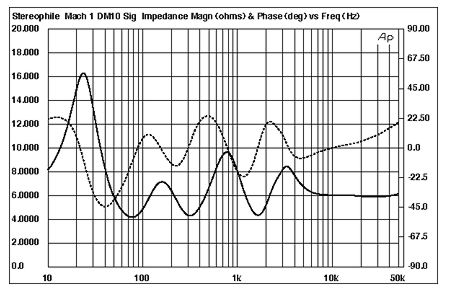
Fig.1 MACH 1 DM-10 Signature, electrical impedance (solid) and phase (dashed) (2 ohms/vertical div.).
The crossover's open architecture made it easy to look at the signals supplied to the individual drive-units (fig.2). The lower electrical crossover frequency was 250Hz, though the upper one was a little lower than the specified 3kHz. The ultimate rollout slopes are, indeed, very steep at 24dB/octave. (Note the expanded scale on this graph, which exaggerates the filters' pass-band effects.)
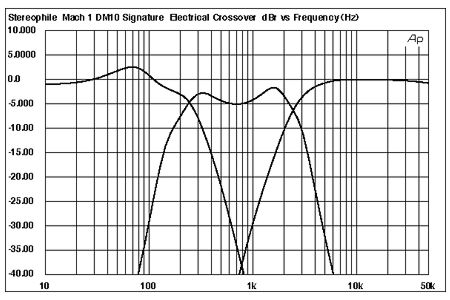
Fig.2 MACH 1 DM-10 Signature, individual electrical drive-signals to tweeter, midrange unit, and woofer; 0dB = 285mV for all three traces (2dB/vertical div.).
Fig.3 shows the actual quasi-anechoic outputs of the three drive-units, measured with DRA Labs' MLSSA system and a calibrated B&K (DPA) 4006 microphone. Bass and midrange units seem generally well-behaved, though the latter is a bit peaky at the top of its passband. The midrange unit's cumulative spectral-decay, or waterfall, plot (not shown), however, revealed that any cone breakup modes were way down in level, meaning that the acoustic peak is possibly due to the residual electrical drive-signal peak seen in fig.2.
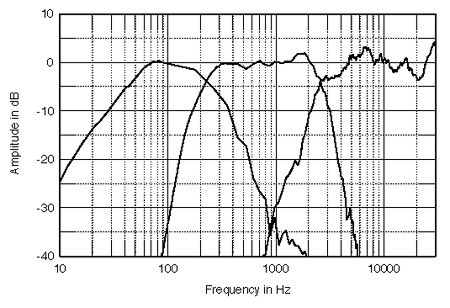
Fig.3 MACH 1 DM-10 Signature, individual responses of tweeter, midrange unit, and woofer on tweeter axis, with nearfield responses of woofer and midrange unit below 400Hz and 200Hz, respectively.
The tweeter appears to have a slight mid-treble hump in its output; this can also be seen in the overall response averaged across a 30 degrees horizontal window on the tweeter axis. I suspect that the shelved-down nature of the high treble that this gives rise to is the reason for DO finding the DM-10 to be very slightly dull in its balance. The 2kHz peak in the midrange unit's output can also be seen in this graph, slightly accentuated by a small suckout in the region where the two upper-frequency units overlap. Nevertheless, DO heard nothing amiss in the treble, so I assume that this response behavior is inconsequential.
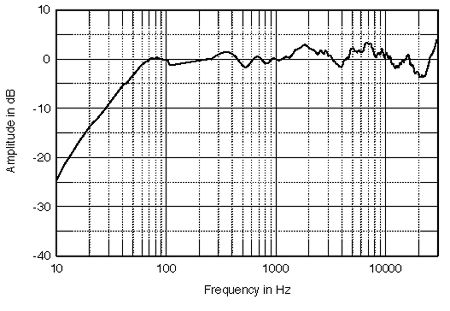
Fig.4 MACH 1 DM-10 Signature, anechoic response on tweeter axis at 45" averaged across 30 degrees horizontal window and corrected for microphone response, with nearfield woofer response below 200Hz.
However, the speaker's lower-frequency behavior in this graph implies a rather overdamped alignment coupled with a slight rising trend through the otherwise flat midrange, which probably led to Dick's finding the DM-10 Signature's balance to err on the lean side. The bass extension is only moderate, with a -6dB point of 38Hz rather than the 24Hz implied by the impedance measurement.
The speaker offers well-controlled lateral dispersion, as can be seen from fig.5, which shows just the changes in response to the tweeter edge of the asymmetric baffle. The response hardly changes up to 15 degrees off-axis, with then the top octave increasingly rolling off for more extreme off-axis angles. A small excess of energy in the crossover region develops between 45 degrees and 90 degrees off-axis, but unless the DM-10 is used very close to a hard reflecting sidewall—not a good idea with any speaker—this shouldn't color its in-room balance.
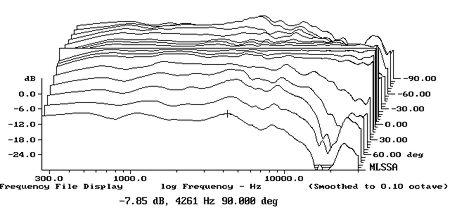
Fig.5 MACH 1 DM-10 Signature, horizontal response family on inside edge of baffle at 45", normalized to response on tweeter axis, from back to front: differences 90 degrees-5 degrees off-axis on side away from drive-units; reference response;differences 5 degrees-90 degrees off-axis on drive-unit side of baffle.
As might be expected from the high-order crossover filters, there's very little change in the DM-10 Signature's balance with changes in vertical listening axis (fig.6). Only when you stand so that you can see the top of the enclosure does a suckout develop in the upper crossover region. As long as you sit so your ears are somewhere between the Signature's midrange axis and the top of its enclosure, you'll perceive pretty much the same balance.
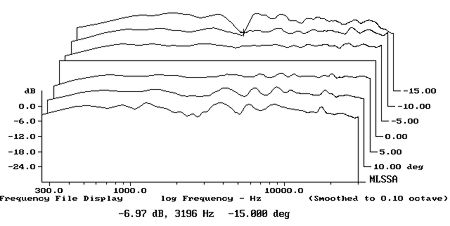
Fig.6 MACH 1 DM-10 Signature, vertical response family at 45", normalized to response on tweeter axis, from back to front: difference in response 7.5 degrees above enclosure; difference level with top of enclosure; difference midway between top of enclosure and tweeter; reference response; difference on midrange axis; difference 7.5 degrees below midrange axis; difference 15 degrees below midrange axis.
In the time domain, the DM-10's step response (fig.7) reveals a not very time-coherent nature. The sharp negative-going spike is the tweeter output, followed half a millisecond later by the positive-going output of the midrange unit, which in turn is followed by the slow, positive-going output of the woofer. The waterfall plot (fig.8) shows a very clean initial decay throughout the midrange and treble, correlating with Dick's finding that the speaker sounded very clean overall. The cursor in this graph is positioned at the top of the midrange unit's passband, where there are some low-level stored-energy problems. But as noted earlier, these are very likely inconsequential in their effects on the Signature's sound quality.
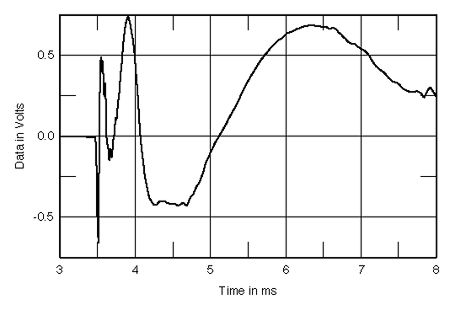
Fig.7 MACH 1 DM-10 Signature, step response on tweeter axis at 45" (5ms time window, 30kHz bandwidth).
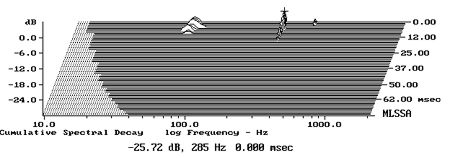
Fig.8 MACH 1 DM-10 Signature, cumulative spectral-decay plot at 45".
As DO reported above, much research was done on the DM-10's cabinet. It did seem very dead to the knuckle-rap test, and calculating waterfall plots from the output of an accelerometer placed at various positions on the cabinet walls confirmed its general inertness. Fig.9, plotted with our standardized -30dB floor so that it can be compared with other such plots published in Stereophile, shows the highest mode (on the front baffle) to lie at 285Hz. It's so far down in level, however, that for all intents and purposes it doesn't exist. Only the "Matrix" cabinets of the B&W speakers and the Aerolam cabinets of the Celestion SL600 and SL700 are in the same league as the MACH 1 when it comes to absence of cabinet vibrations.
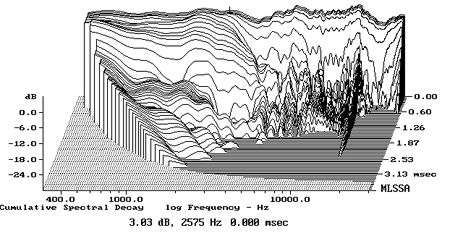
Fig.9 MACH 1 DM-10 Signature, cumulative spectral-decay plot of accelerometer output fastened to baffle below midrange unit. (MLS driving voltage to speaker, 7.55V; measurement bandwidth 2kHz.)
Coupled with Dick's enthusiastic auditioning of the DM-10 Signature, these impressive measurements indicate an auspicious debut from designer Marc McCalmont. I look forward to hearing his efforts in the cutthroat arena of more affordable designs.—John Atkinson
- Log in or register to post comments




































